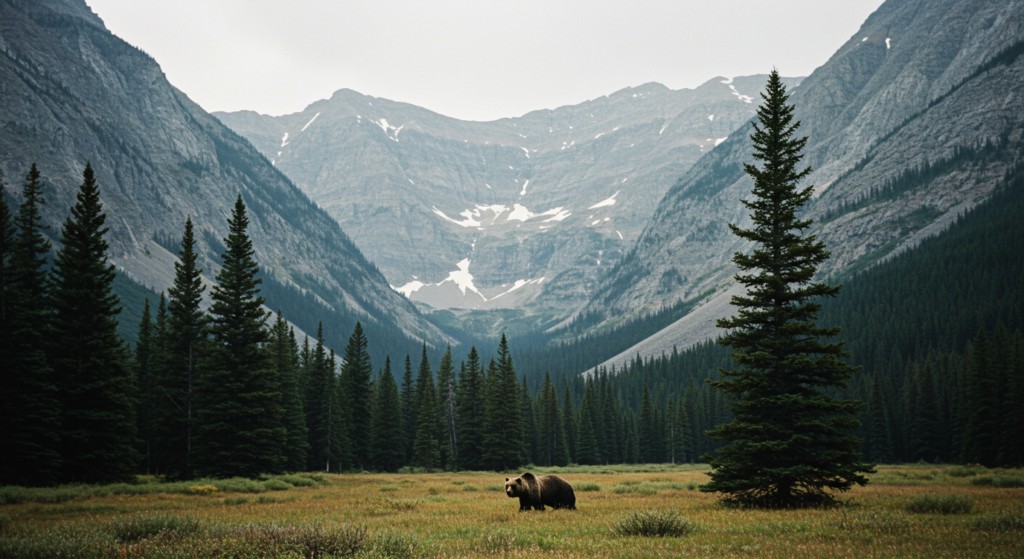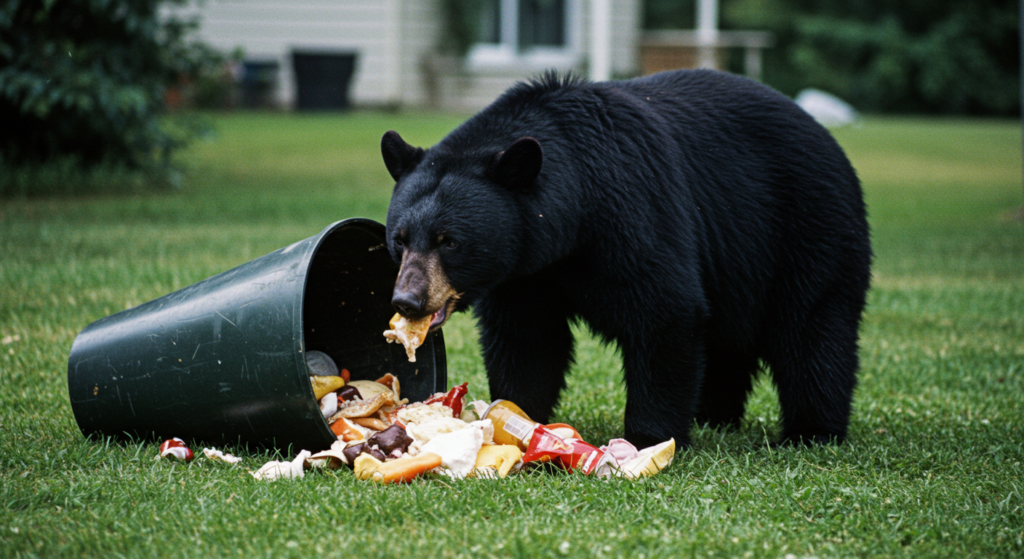Bears in the Backcountry: Be Aware
Bears are a breathtaking sight in the wild, adding to the thrill of exploring national parks and backcountry trails. While most bears prefer to avoid humans, encounters can happen, and knowing how to handle them is key to staying safe. Being bear aware is crucial for anyone venturing into bear country. Whether you’re hiking deep into bear country or setting up camp for the night, following a few simple precautions can help protect both you and these incredible animals. Preparation and awareness can make all the difference between a peaceful experience and a dangerous encounter.
Be Bear Aware

Store Food the Right Way
Bears have an incredible sense of smell, and improperly stored food is one of the biggest reasons they wander into campsites. Even a small food scrap or an unattended cooler can attract a curious bear. To prevent this, always keep all food, trash, and scented items secured in a bear-proof container or hung from a tree at least 10 feet off the ground and 4 feet away from the trunk. This makes it difficult for bears to access and discourages them from associating humans with food.
Many national parks provide bear-proof storage lockers, use them whenever available. Keeping your campsite clean and odor-free is just as important as securing food. Wipe down picnic tables, store cookware properly, and never leave food or scented items inside your tent. A well-maintained campsite reduces the risk of attracting wildlife and helps keep bears wild.
Make Noise on the Trail
Bears usually avoid humans, but they don’t like surprises. When hiking through bear country, make plenty of noise by talking, singing, or using bear bells. This lets bears know you’re approaching, giving them time to move away before you get too close. Bears are naturally wary of people, and most will leave if they hear you coming.
Traveling in groups also helps reduce the likelihood of an encounter. Studies show that bears are far less likely to approach larger groups of hikers than solo travelers. If you’re venturing into dense brush or areas with limited visibility, be extra cautious; slow down, make more noise, and stay alert for signs of bears, such as tracks or overturned logs.
Keep Your Distance
If you spot a bear, admire it from afar and resist the urge to get closer. No photo is worth the risk of a dangerous encounter. Always keep at least 100 yards between you and a bear, even if it appears calm. Getting too close can make a bear feel threatened, which may lead to defensive or aggressive behavior.
If a bear notices you, stop and assess the situation. Back away slowly while avoiding direct eye contact. Running can trigger a bear’s chase instinct, so remain calm and move away in a controlled manner. If the bear follows you, stand your ground and prepare to use your bear spray. Showing confidence and giving the bear space often prevents further escalation.
Essential Bear Safety Gear
Carry and Know How to Use Bear Spray
Bear spray is one of the most effective tools for deterring an aggressive bear, but only if used correctly. It’s a powerful deterrent that can stop a charging bear in its tracks, giving you time to retreat safely. However, in a high-stress situation, fumbling with your bear spray can be costly. That’s why it’s crucial to know how to use it before you need it.
Keep your bear spray easily accessible, ideally in a holster on your belt or backpack strap. Practice removing the safety clip and aiming quickly so you’re prepared in an emergency. If a bear charges, aim slightly downward and spray in short bursts to create a defensive cloud between you and the bear. being bear aware and having this non-lethal tool has saved countless lives and is a must-have for any outdoor adventure in bear country.
Recognizing Problem Bears

Know the Signs of a Food-Conditioned Bear
Some bears become too comfortable around humans, often because they’ve learned to associate people with food. A bear that has been fed, whether intentionally or accidentally, is more likely to approach campsites, raid food supplies, or display aggressive behavior. This puts both the bear and people at risk.
Signs of a problem bear include lingering around campsites, scavenging in picnic areas, or showing a lack of fear toward humans. If you see a bear acting this way, report it to park rangers immediately. Never attempt to feed or interact with a bear, human food disrupts their natural behavior and often leads to situations where the bear has to be relocated or euthanized for safety reasons. Being bear aware and keeping bears wild is the best way to ensure their survival and protect future outdoor experiences.
Bear Safety Checklist
To stay safe and minimize your impact on bear populations, always follow these essential bear country rules:
- Store food properly using bear-resistant containers or lockers.
- Make noise while hiking to avoid surprising a bear.
- Keep your distance—never approach a bear for any reason.
- Carry bear spray and know how to use it.
- Report problem bears to park rangers instead of taking matters into your own hands.
Respect the Wild and Stay Safe
Bears are a vital part of the wilderness, and encountering one can be an unforgettable experience. By following bear safety guidelines, proper food storage, making noise, keeping your distance, carrying bear spray, and recognizing problem behavior, you can enjoy the backcountry while helping to protect these incredible creatures. The more we respect nature, the safer and more rewarding our outdoor adventures will be.
With the right precautions, you can explore bear country with confidence. Stay alert, be prepared, and embrace the wild responsibly. Your safety, and the survival of these magnificent animals, depends on it.
